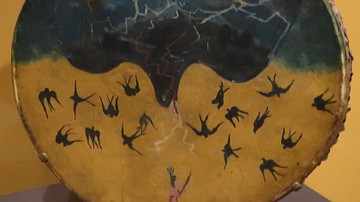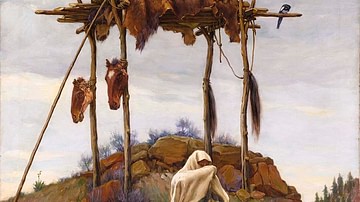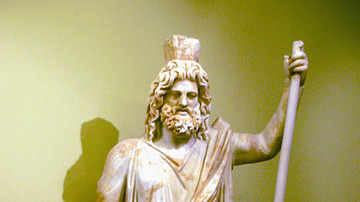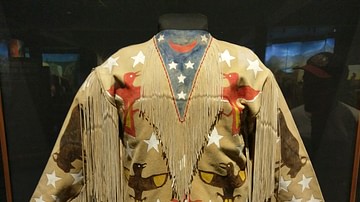
Hecate (Hekate) is a goddess of Greek mythology capable of both good and evil. She was associated with witchcraft, magic, the Moon, doorways, and creatures of the night like hell-hounds and ghosts. Hecate often carries a torch in her connection with the night. She has three faces for her role as the goddess of boundaries and the guardian of crossroads.
Hecate's Family Relations
According to Hesiod in his Theogony, Hecate is the daughter of Perses and Asteria, making her the granddaughter of the Titans Phoebe and Coeus. Euripides, on the other hand, mentions her mother is Leto. Other writers claim her as the daughter of Zeus and Demeter, Aristaion or Night. The goddess was frequently associated with Demeter and even assimilated to her in some cults.
Rituals Associated with Hecate
From the 5th century BCE, the goddess is associated with the darker side of the human experience, that is death, witchcraft, magic, the Moon, dreams, fierce hounds and creatures which roam the darkness of night. As the Oxford Classical Dictionary phrases it,
…outlandish in her infernal aspects, she is more at home on the fringes than in the centre of Greek polytheism. Intrinsically ambivalent and polymorphous, she straddles conventional boundaries and eludes definition. (649)
Hesiod describes the goddess in the following glowing terms:
Zeus, Cronus' son, honoured [Hecate] above all others: he gave her splendid gifts - to have a share of the earth and of the barren sea, and from the starry sky as well she has a share in honour, and is honoured most of all by the immortal gods. For even now, whenever any human on the earth seeks propitiation by performing fine sacrifices according to custom, he invokes Hecate; and much honor very easily stays with that man whose prayers the goddess accepts with gladness, and she bestows happiness upon him. (Theogony 411-420)
Hesiod goes on to say that Hecate supports or is a protective goddess of warriors, athletes, hunters, horsemen, herdsmen, shepherds, fishermen, and children. Her companions are the Furies (Erinyes), the winged creatures who punished wrong-doing, and her children are the Empusae, female demons partial to seducing travellers.
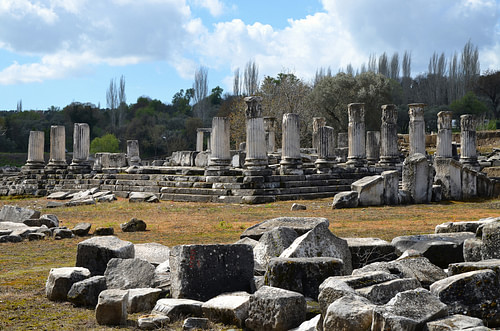
The goddess had unusual rituals performed in her honour in the Greek religion, which include the offerings of food – given at crossroads, road junctions, and any other sort of boundary or threshold – known as 'the supper of Hecate'. These took the form of small cakes of eggs, cheese, bread, and dog meat, which were lit with miniature torches or, alternatively, a dish of red mullet, which was usually prohibited from offerings to the other gods. Hecate was also offered the sacrifice of dogs, especially puppies. The dog connection may be the fact that dogs were known to eat the dead if left unburied; they also howl at the moon, of course. A further canine connection may be with the Egyptian god Anubis who guided souls to the underworld, and the Greek three-headed hound of Hades, Cerberus, may be an earlier form of Hecate. The offerings to the goddess were made each month during the night of a new moon. The goddess was especially appealed to by sorceresses for aid in their magic and spells and appears on surviving examples of curse tablets.
According to Pausanias, the 2nd-century CE Greek traveller, the island of Aegina had a mystery cult dedicated to the goddess where it was believed those suffering mental illness could be cured. Kos, Erythrai, Samothrace, Thessaly, and Miletos also worshipped the goddess, with the latter having a 6th-century BCE circular altar for sacrifices to be made in her honour (the earliest archaeological evidence of her worship). The worship of Hecate continued into the Hellenistic and Roman periods with significant archaeological finds of votive offerings to the goddess being found at Lagina in Caria and Phrygia.
How is Hecate Represented in Art?
Hecate appears regularly in Greek art and literature only from the 5th century BCE onwards, before which she is only a minor figure who features in the stories of Demeter (as Persephone's handmaid) and Artemis. This may indicate the goddess' relatively late arrival in Greece from Caria, although, she was considered a Greek goddess and not of foreign origin by the ancient Greeks themselves. She is typically portrayed on Greek pottery as a young woman carrying a torch or a key, both reminders of her function as a night deity, a guardian of the gates of Hades, and as a goddess of boundaries. One 5th-century BCE Attic vase depicts a woman offering the goddess a puppy and a basket of cakes.
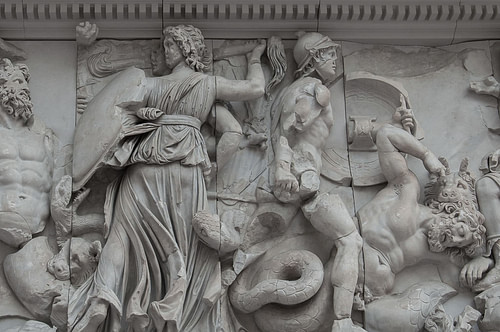
In sculpture, her most striking appearance occurs in Classical and Hellenistic Period figures which have the goddess with three bodies and three heads (or a single body with three heads or three bodies and a single head), usually with halos of moonbeams. The historian Robert Graves notes that the heads could be of a dog, lion, and horse, which represented the constellations which cover the calendar year. The goddess, though, usually appears with human heads. Known as hekataia, the first example of the triple-Hecate form is credited to a figure which guarded the entrance to the Acropolis of Athens, the Hekate Epipyrgidia ('On the Ramparts') by the 5th-century BCE sculptor Alcamenes. The 2nd-century BCE Pergamon Altar of Zeus has a three-headed Hecate attacking a snake-like giant, helped by a dog.
It was a common practice to place images of the triple goddess on city walls, in particular, at city gates, entrances to sacred sites and the doorways of private homes where it was believed she acted as a protectress and warded off evil spirits. Finally, the goddess is referenced in the tragedy plays of Euripides and Sophocles, amongst others, and in Virgil's Aeneid where she acts as Sibyl's guide in the Underworld.
